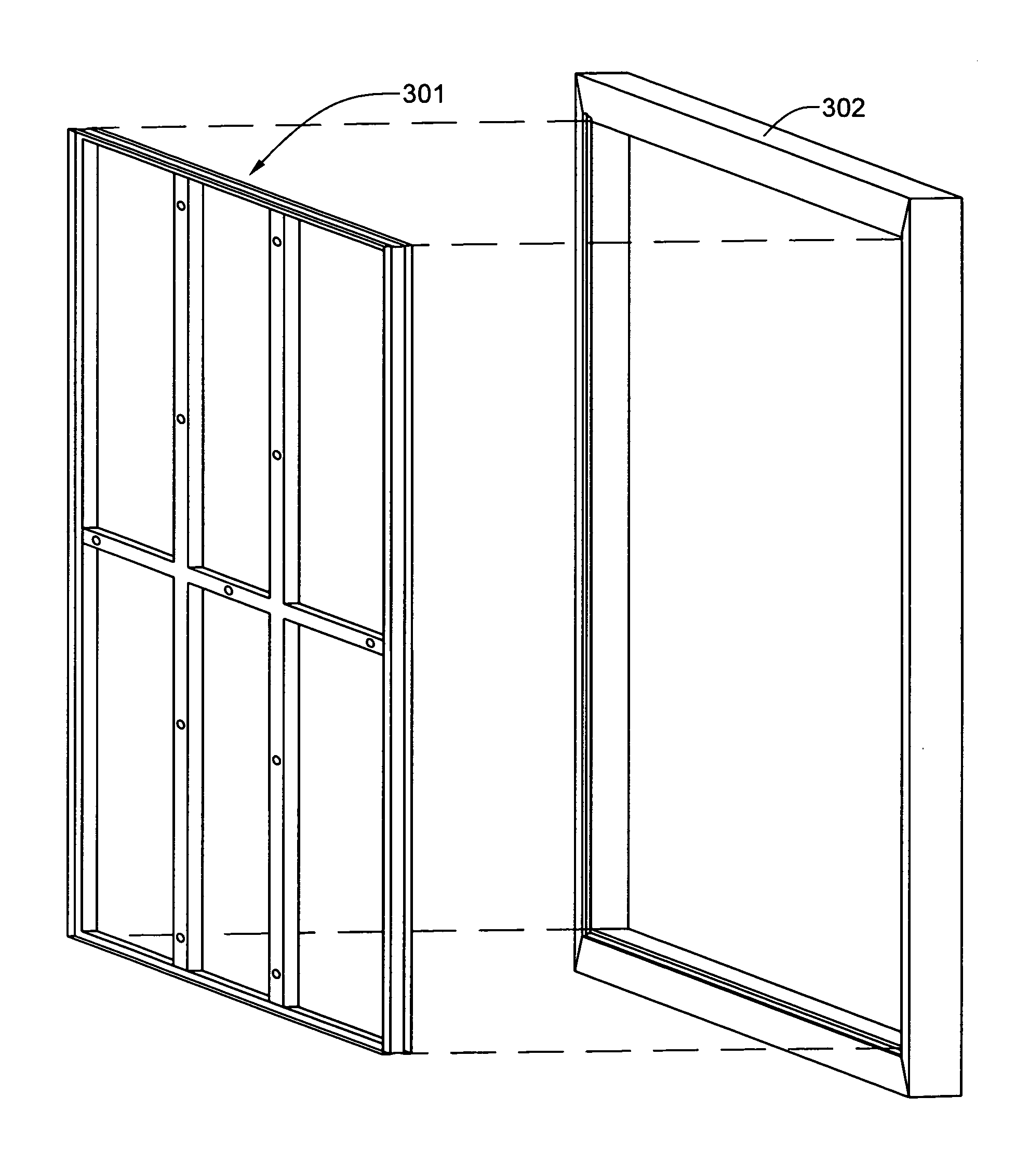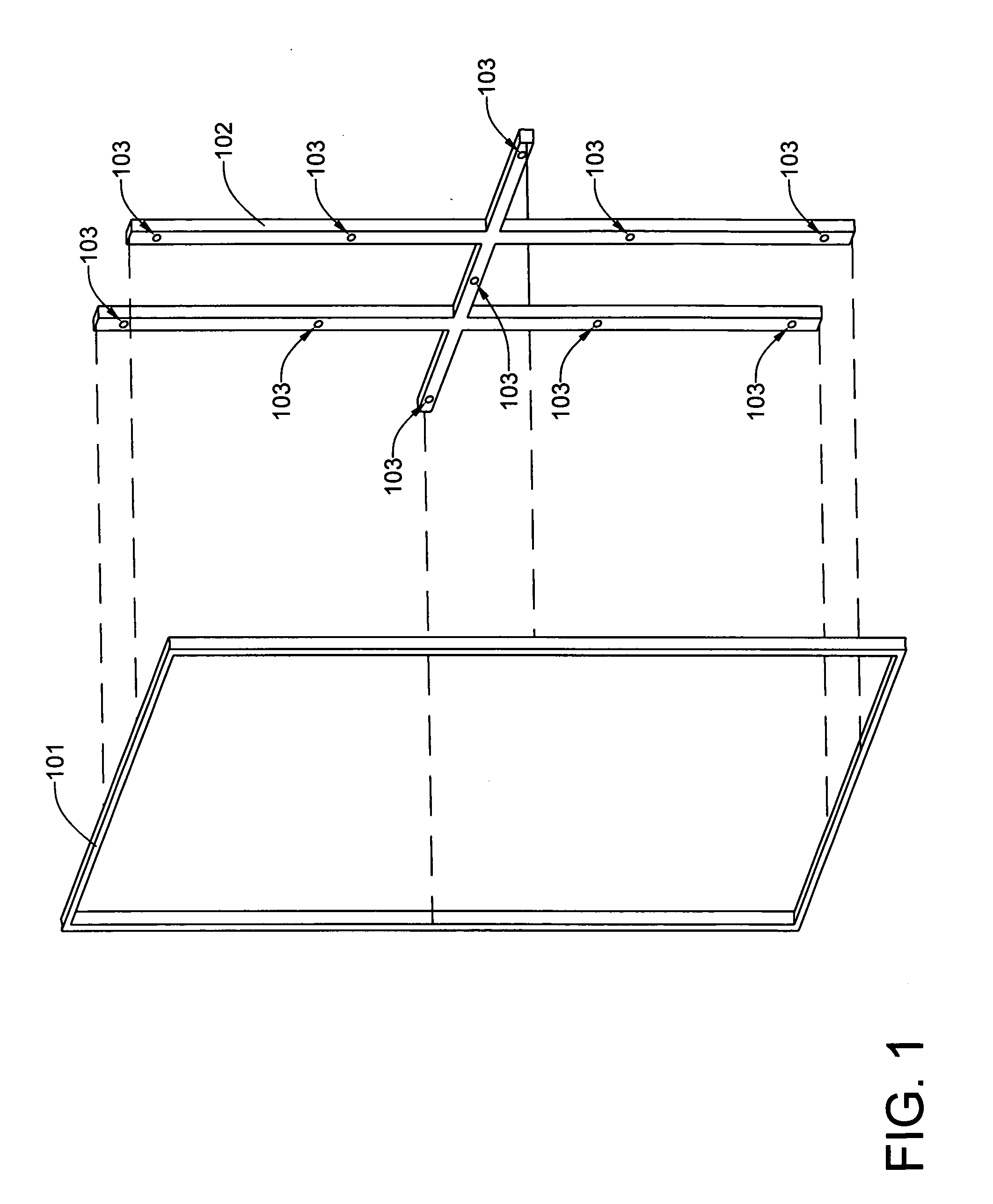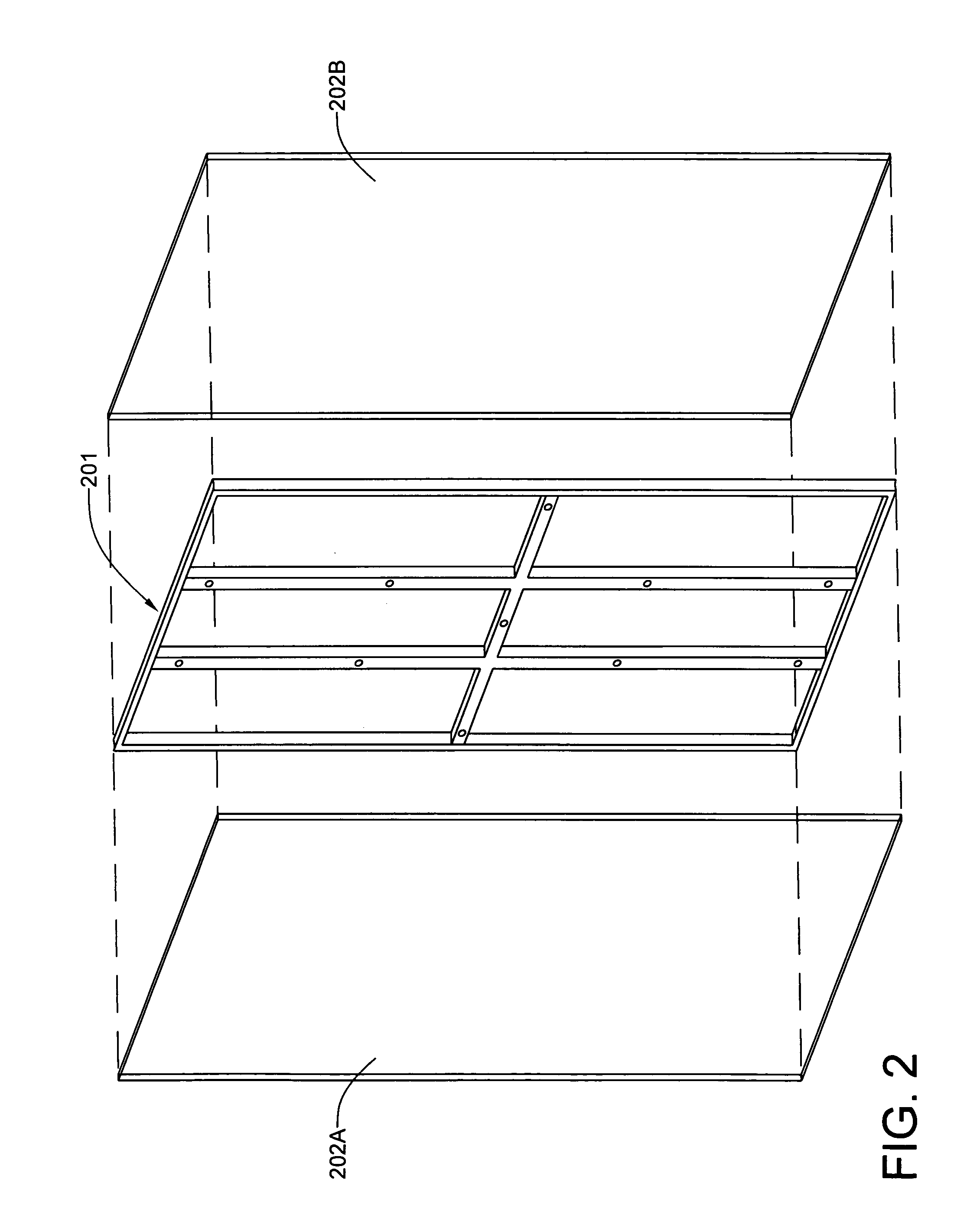Divided light windows having magnetically-attached grids
a technology of divided light windows and grids, which is applied in the direction of covering/linings, constructions, building components, etc., can solve the problems of maintaining architectural authenticity, affecting the cleaning effect, and affecting the appearance of the interior, so as to achieve the effect of easy and quick removal for cleaning
- Summary
- Abstract
- Description
- Claims
- Application Information
AI Technical Summary
Benefits of technology
Problems solved by technology
Method used
Image
Examples
Embodiment Construction
[0019]The invention will now be described with reference to the attached drawing FIGS. 1 to 5. It should be understood that the drawing figures are not necessarily drawn to scale and are meant to be merely illustrative of the invention.
[0020]Referring now to FIG. 1, a double-pane perimetric window seal 101 is shown with an internal grid 102. The internal grid 102 can be fabricated from wood, an engineered wood product (essentially compressed sawdust held together in a matrix containing a glue or other bonding agent, or a non-ferrous material such as aluminum. The internal grid 102 is provided with apertures in which are positioned neodymium-iron-boron (NIB) permanent magnets 103. The NIB permanent magnets 103 extend from one side of the grid to the other. Although the NIB magnets 103 can be adhesively or frictionally secured within the apertures, the panes of glass will effectively retain them in place once the internal grid is secured between the panes of glass 5 and 6 and the asse...
PUM
 Login to View More
Login to View More Abstract
Description
Claims
Application Information
 Login to View More
Login to View More - R&D
- Intellectual Property
- Life Sciences
- Materials
- Tech Scout
- Unparalleled Data Quality
- Higher Quality Content
- 60% Fewer Hallucinations
Browse by: Latest US Patents, China's latest patents, Technical Efficacy Thesaurus, Application Domain, Technology Topic, Popular Technical Reports.
© 2025 PatSnap. All rights reserved.Legal|Privacy policy|Modern Slavery Act Transparency Statement|Sitemap|About US| Contact US: help@patsnap.com



